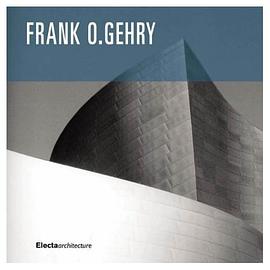

具體描述
Ever since his wildly dramatic Guggenheim Museum in Bilbao, Spain, opened in 1997, Frank Gehry has been widely and justifiably considered the leading architect of our time. Although this ascension occurred seemingly overnight, it actually took more than half a century, counting architecture school and work in eight other offices before he opened his own firm in 1962. Since then, Gehry's designs have become increasingly freer and more inventive. He first explored existing design approaches such as Frank Lloyd Wright's, Southern California vernacular, minimalist modernism, and Miesian structuralism before blazing his own trail. This included corrugated cardboard furniture, chain-link fencing, unfinished metal siding, exposed wood studs, and other "cheapskate" materials; skewed geometries; and a recurring preoccupation with fishlike building forms. He learned to fragment buildings into discrete components (often making each room a structure unto itself), experiment with color, create forced perspectives, and, above all, bring natural light indoors masterfully. His recent designs tend to be baroque and romantic in ways never before seen, often resembling sails or abstracted flowers. Gehry's architecture is an art that involves great risk taking, and while not every design succeeds fully, his courage is exemplary and his batting average is surprisingly high.
For readers who truly want to know about Gehry, The Complete Works is indispensable. It documents 250 works, even early ones that other architects might conveniently omit, and the material is well illustrated on 614 oversized pages. Insightful essays by two eminent architectural scholars set the stage for this massive and unrivaled traversal of Gehry's designs. --John Pastier --This text refers to an out of print or unavailable edition of this title.
著者簡介
圖書目錄
讀後感
評分
評分
評分
評分
用戶評價
相關圖書
本站所有內容均為互聯網搜索引擎提供的公開搜索信息,本站不存儲任何數據與內容,任何內容與數據均與本站無關,如有需要請聯繫相關搜索引擎包括但不限於百度,google,bing,sogou 等
© 2025 book.quotespace.org All Rights Reserved. 小美書屋 版权所有




















